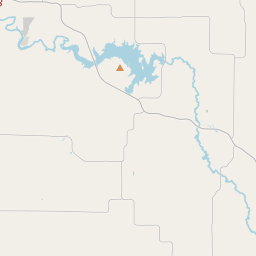Eastland
Historical marker location:












County seat, Eastland County. Named for William M. Eastland--Texas War for Independence hero who was in Mier Expedition against Mexico, and was executed in "Black Bean" lottery at Rancho Salado in 1842. Most noted early local people were Comanches, who resisted occupation of area by white settlers. The last recorded Indian raid in county was in 1874. Eastland was named county seat in an election on Aug. 2, 1875. With 250 people it was incorporated on June 6, 1891, and W.Q. Connellee was elected as mayor. After a discovery in 1917, one of the fabled oil booms of Texas occurred nearby, with Eastland center for legal matters. With oil priced $2.60 a barrel, many wells flowed at 10,000 barrels a day. The city quickly grew to 25,000 people; 5 banks prospered. Coming here to seek "black gold" were celebrities, including evangelist Billy Sunday, circus owner John Ringling, sports figures Jess Willard, Tex Rickard. An international wonder-story happened here: the old courthouse cornerstone was opened (on this site) in 1928 to reveal survival of "Old Rip", a horned toad placed there with other mementoes on July 19, 1897. Continuing oil production, agricultural processing and clay products bolster the present economy. (1968)
As one of the most visible programs of the Texas Historical Commission (THC), historical markers commemorate diverse topics in Texas history, including: the history and architecture of houses, commercial and public buildings, religious congregations, and military sites; events that changed the course of local and state history; and individuals who have made lasting contributions to the state, community organizations, and businesses.
The first domed stadium in the world, the Astrodome, was built in Houston in 1965 and hosted numerous sporting events and concerts over the years.
The county's official establishment came in 1858, when Texas Legislature recognized it as a separate entity. The county was named after William M. Eastland, who fought in the Texan Revolution and served as a Texas Ranger. During the late 19th and early 20th centuries, Eastland County experienced significant growth and development thanks to the arrival of railroads, making it a crucial transportation hub for the surrounding regions.
The discovery of oil in the early 20th century also brought prosperity to Eastland County. The oil boom led to a population increase, as well as the growth of industrial and commercial sectors. However, the Great Depression of the 1930s had a devastating impact on the county, leading to a decline in population and economic activity.
In recent decades, Eastland County has worked to revive its economy and preserve its rich heritage. Today, the county is known for its thriving agricultural sector, including cattle farming and crop cultivation. The county also attracts tourists with its natural beauty, offering outdoor recreational activities such as fishing, hunting, and camping. Eastland County continues to embrace its history while looking towards a promising future.
Eastland County Timeline
This timeline provides a concise overview of the key events in the history of Eastland County, Texas.
- 1850 - Eastland County is established as a county in Texas.
- 1854 - The town of Palo Pinto is designated as the county seat.
- 1858 - Palo Pinto is abandoned, and the county seat is moved to Merriman.
- 1875 - Merriman loses the county seat status to Eastland.
- 1890 - The Texas Central Railroad arrives in Eastland, fueling growth and economic development.
- 1907 - The first oil well in Eastland County is drilled, leading to the rise of the oil industry in the area.
- 1920 - The Eastland City Dam is built, creating Lake Leon and providing a water source for the region.
- 1930 - The population of Eastland County reaches its peak, with over 30,000 residents.
- 1938 - Eastland County is severely affected by the devastating tornado outbreak known as the "Wichita Falls–East Texas Tornado Outbreak."
- 1950s - The decline of the oil industry and changes in agriculture lead to a population decrease in Eastland County.
- Today, Eastland County is a rural area with a diverse economy, including agriculture, oil and gas production, and tourism.